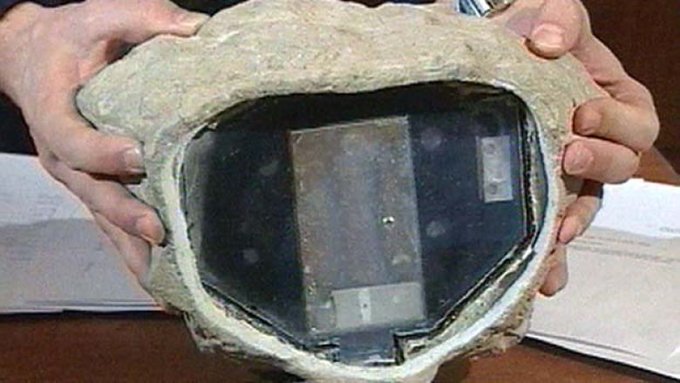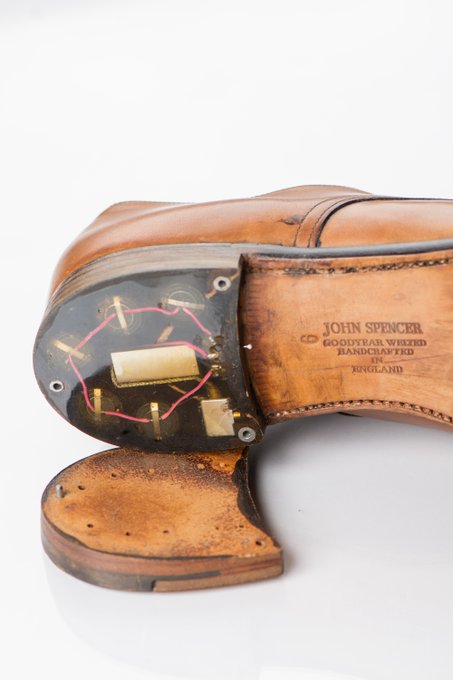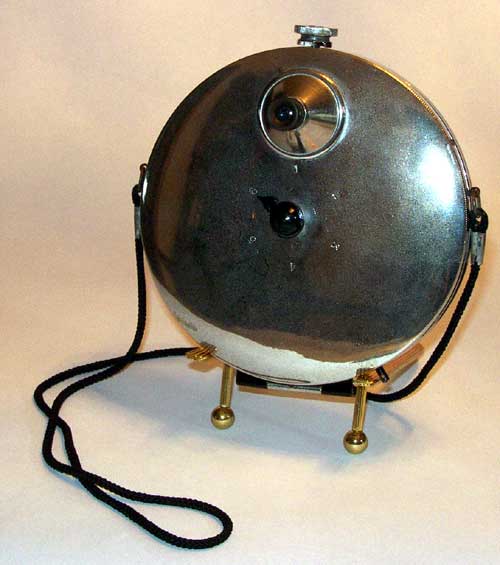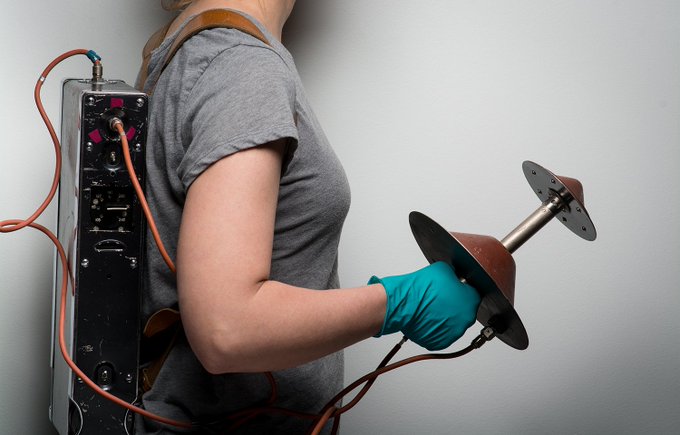Sneakiest Spy Devices That Are Actually Real

February 7, 2023
•17 min read
Tune in for some devious spy devices that actually exist!
From the devilishly devious to the outright absurd, let’s take a close look at some of the secret ways people invade your privacy, and the gadgets they use to do so.
Suspicion In Somalia
Back in May 2016, something happened in Somalia’s capital of Mogadishu that rocked the entire country to its foundations. It was a clear day, and everything seemed completely ordinary until a single bird flying overhead crashed to the ground.

Downed drone in Somalia reflects latest trend in drones: ones that look like birds theverge.com/2016/7/14/1218…
Russia showcases its new spy drone resembling an owl at annual military expo themoscowtimes.com/2019/06/25/thi…
Stranger Danger
Airbnbs can be great, cheap alternatives to hotels when you want a short overnight stay somewhere. But there’s always going to be a certain level of risk associated with sleeping in a complete stranger’s house. When Max Vest and his girlfriend decided to spend the night in a Miami-based Airbnb, they found this out the hard way.
Their host seemed nice enough, and he had great ratings on the website, so they shrugged it off when he introduced himself under a different name than the one he'd used over text. They couldn’t shrug off what happened next though. Night came, and Max turned the lights off ready to go to sleep. Before he closed his eyes though, he noticed two small lights on the far side of the room. They looked like phone chargers from afar, but after getting closer he realized they were actually tiny cameras, set up to record the bed.
Spying Stones
You’ve heard of stepping-stones but what about spying stones? They’re real and they’re just as terrifyingly ridiculous as they sound. The Russian Ministry of Defense have been working on the covert surveillance devices, and they’re not just stones with cameras in them.

MFA spox #Zakharova : Moscow “spy rock” story 2006 turned out to be true, after several years of UK denials. I believe in due course we will also see them accepting the whole #Salisbury story as a provocation, with excuses to follow.
Lightbulb Listener
There’s a relatively simple way of hacking ordinary lightbulbs to become covert surveillance devices. All you need is a telescope and a little gadget called an “electro-optical sensor”. In basic terms, electro-optical sensors convert light into electronic signals that can be read by a machine.

Bugged Bugs
Spies will always use pretty much any means possible to get the job done. And that includes creating mind-controlled cyborg insects. In the past, the US military has installed electrodes, batteries, and even tiny video cameras onto moths and beetles to turn them into miniature surveillance devices.
Furthermore, this has been done in such a way that an operator can literally control flying insects like drones! Scientists would insert miniscule brain probes into the insects during their pupa stage, so that the ultra-light implants would naturally integrate into the body of the developing bug. This allows the insects to be remotely operated.

Theremin’s Bug
To write an article on spying and not mention Leon Theremin would be as bad as discussing the best ice cream flavors without mentioning chocolate. That’s because he created one of the most successful spying devices ever used against the US government.
Theremin was a Russian inventor who was imprisoned in 1938, suspected of crimes against the Soviet state. While imprisoned, he was tasked with inventing a bug so sophisticated it could go undetected in Spaso House, Moscow, where the US ambassador to the Soviet Union lived. That was child’s play for Theremin. By the end of the Second World War, he’d finalized his device and it was hidden inside a great carved seal, deviously given to US officials as a symbol of friendship. The plan worked. The US took it and hung it in his study in Spaso House, near Moscow’s American embassy, unwittingly throwing away his privacy for seven whole years! It wasn’t until 1952 that the bug was finally discovered. British broadcasters had reported hearing voices on their radios whenever they were near the American embassy.
Privacy Prevention
Back in 2013, Edward Snowden, a former employee of the US National Security Agency, leaked a ton of highly classified documents in one of the biggest intelligence breaches in history. Arguably the most worrying of these documents detailed a computer program called XKeyscore.
The program, developed by US intelligence, allows the user access to a person’s private emails, browsing history, and more. And all it needs to work is some basic identifying information, like a person’s email or Internet Protocol address. Not only that, but Snowden claimed the program could wiretap anybody, from a federal judge to the president themselves, in just a couple of clicks! So, essentially, anything you do online can be tracked without your permission or knowledge. The program was officially designed to catch criminals, and it’s true.Transit Tracker
Back in 2010, Californian student Afifi was with a friend taking his car to the garage for an oil change when he noticed a wire sticking out from beneath the back of his vehicle. Confused, he reached under, grabbed it, and pulled out a pair of very strange devices. One looked like some sort of battery pack, and the bigger one seemed to be a transmitter of some kind.
Wasting no time, the two friends posted the find on a Reddit forum and people’s opinions were pretty unanimous. It was a tracking device, and not only that, but one used by law enforcement. Young Afifi was being tracked by the FBI! And he was pretty sure he knew why. It turns out that the student’s father was a religious leader and had recently passed away. After his passing, Afifi had been contacted by the FBI several times with a slew of racist questions. So, when he didn’t cooperate, they must’ve planted the tracker on his car. Scarily, it was actually legal in the US back then for police to secretly place GPS trackers on any vehicle they wanted even if it was parked in a private driveway! Thankfully, that’s not the case anymore. The story doesn’t end there though, just days after the Reddit post, Afifi noticed two suspicious looking people examining his parked car. He went out to confront them, and two SUVs pulled up carrying police officers in bullet-proof vests!
Pidge-cam
The idea of using bird drones isn’t new. In fact, actual birds were being used for covert spy missions as long ago as World War 1! Carrier pigeons have been used for thousands of years to send written messages, because they’re easily trained and will attempt to fly home wherever they’re released; hence why they’re sometimes known as Homing Pigeons.
However, the German Army came up with a novel new use for the pigeons during the First World War. They strapped special cameras onto them and sent them flying over the battlefield on reconnaissance operations! The concept’s not as ridiculous as it sounds, either. The cameras were light enough for the birds to fly without issue, and the pigeons were incredibly reliable. Hundreds of thousands of the feathered flyers were sent through enemy fire over the course of the war, and a whopping 95% of them completed their missions. In fact, they’ve earnt more medals of honor than any other animal! So, next time you think of turning your nose up at one of the “flying rats”, think about how many medals of honor you’ve got.Kitty Control
In the history of espionage, some ideas have worked perfectly, and others, not so much. One of the CIA’s craziest plans was to convert cats into spies. Long story short, in the 1960s, they got a poor cat from somewhere and operated on it to insert batteries and a recording device into it.


Goofy Gadgets
If you weren’t already convinced that James Bond is more fact than fiction, there are a few gadgets that will leave no doubt in your mind. There were shoes kitted out with a hidden microphone and transmitter, which looked like they had been ripped straight from a movie.
The shoe belonged to an American diplomat in the 1960s and was secretly modified by the Soviets when he sent it off for repair. That must’ve been a sole destroying discovery.#SPYArtifact : Shoe heel transmitter, Romanian Secret Service, 1960s. Transmitter, microphone & batteries were imbedded in the heel of the target's shoe - a walking radio station, transmitting all conversations. View more artifacts online: bit.ly/2J1UN7P #MuseumFromHome
1886 CHARLES P. STIRN AND ROBERT D. GRAY Gray and Stirn produced a concealed 'Vest Camera', which took pictures through a buttonhole. It took six exposures on a 6-inch plate disk. Within four years they will sell 18,000 of them. Made by brother Rudolph Stirn in Berlin.
#SPYArtifact : Vlad’s Bug Detector (NLJD), 1970s. Most devices find bugs by sensing a power source or signal. But if it’s turned off—no luck. Vladimir Alekseyenko’s non-linear junction detector sends radio waves that read reflected energy emitted by a battery or diode, on or off.
The Real Eye of Sauron
Even if you’re not a fan of Lord of the Rings, you’ve probably heard of the Eye of Sauron, the demonic all-seeing eye on top of that big tower in Mordor. Back in 1964, the CIA came up with an idea to spy on China that was strikingly similar.
Communist China had just tested a bomb that produced a suspiciously nuclear-looking mushroom cloud, and the US were worried they’d cracked the secrets of the atom. So, they decided the logical course of action would be to install a giant surveillance device on top of one of the tallest mountains in the Himalayas. From there, it would have a perfect view of China’s test site. Fast forward a few months and the CIA had assembled an elite team for the job, chosen for their mountain climbing and scientific prowess, a pretty niche combo. In the fall of 1965, they began their expedition. The mountain they had to climb is called Nanda Devi, in India. Only six people had ever reached the 25,000ft tall peak before them, and three of them perished on the way back down! And they hadn’t been lugging a huge 40lb surveillance package along the way. After days of struggling up the mountain with the cumbersome device, a storm suddenly hit, and conditions got so bad that the team had to abandon the expedition.

The Private Spy
North and South Korea have a long and bitter history, and with both opposing states being so close to one another, there’s been a helluva lot of spying from both sides. In the 1990s though, South Korea conducted what could be considered the most ridiculous espionage mission in history.
South Korean agent Park Chae-seo, codenamed Black Venus, was chosen for the operation. Posing as a disgruntled former military officer turned businessman, he managed to organize a meeting with then North Korean leader Kim Jong-Il.



























